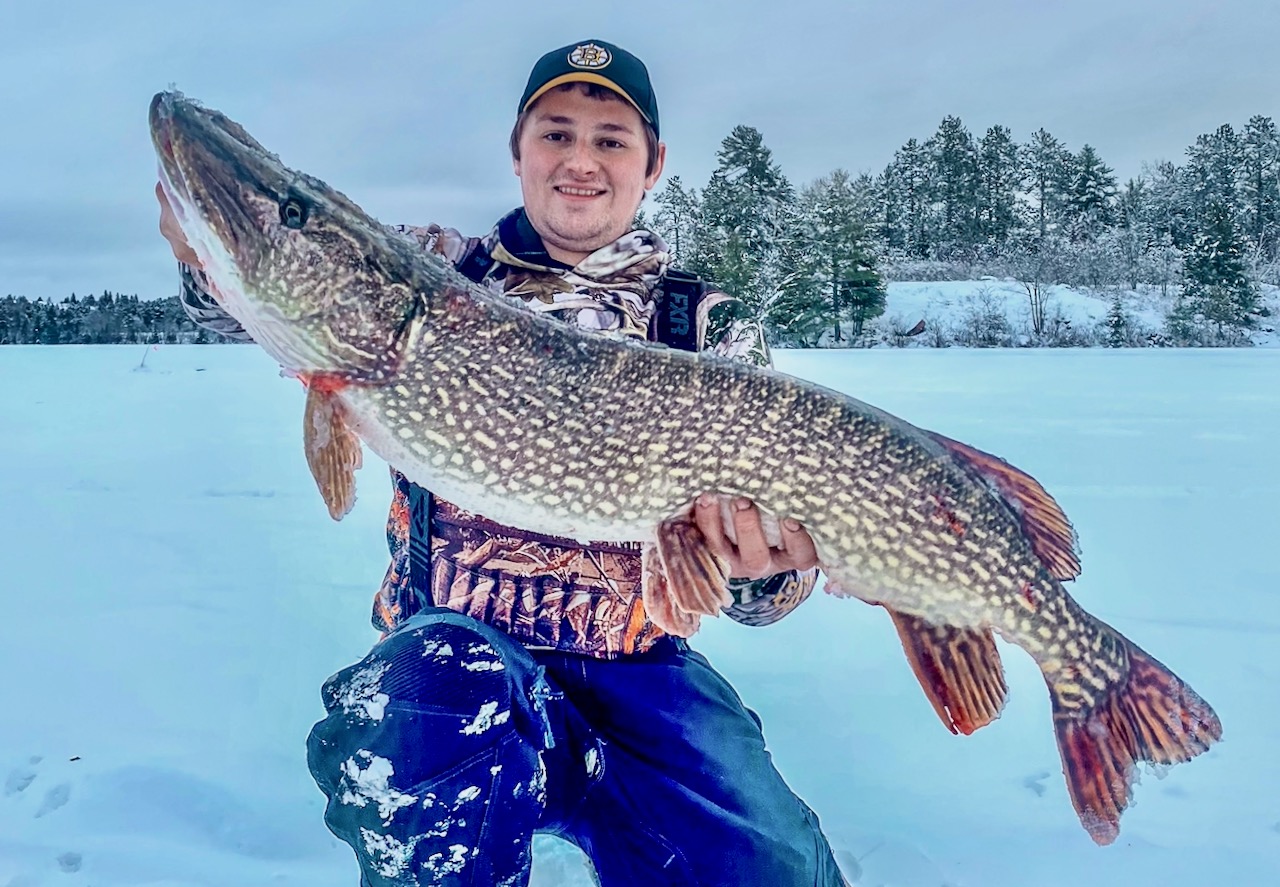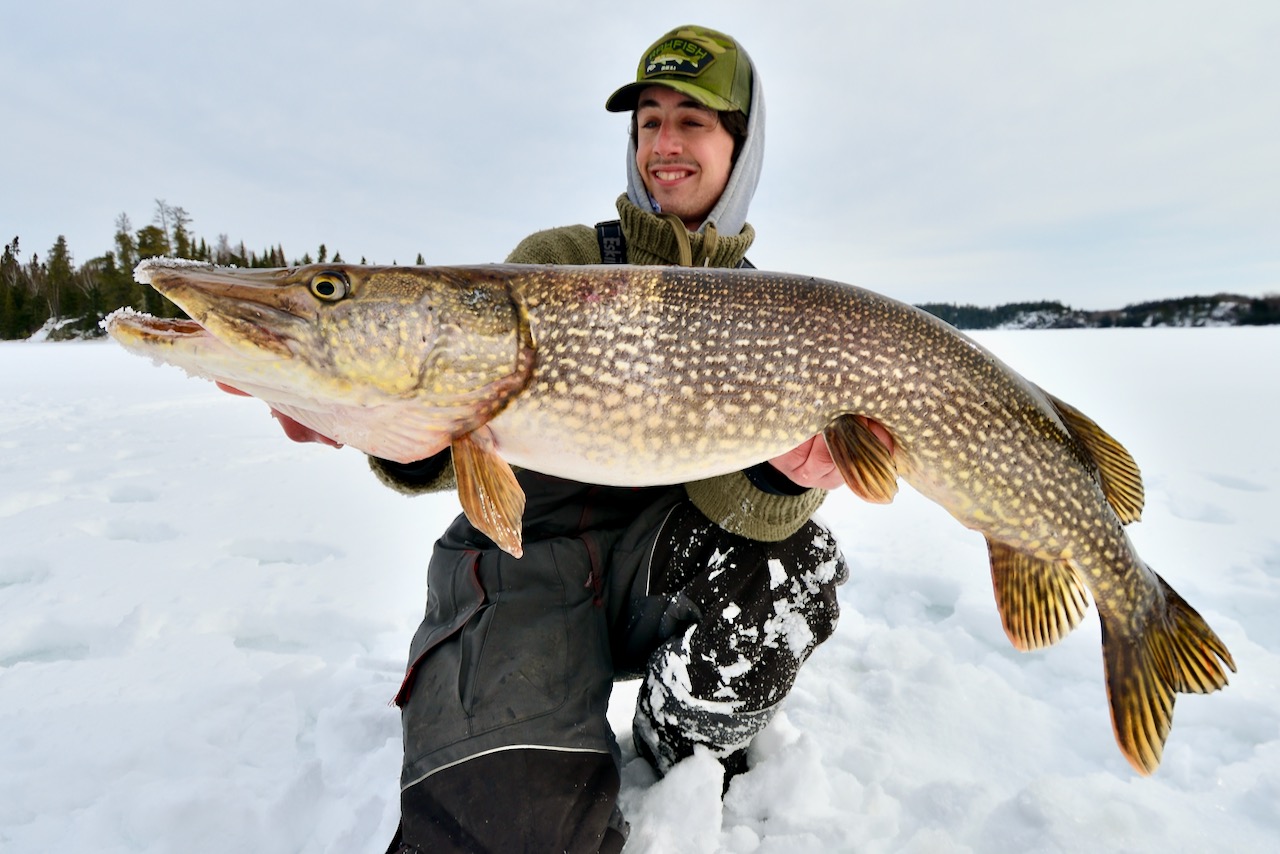PRO PIKE PLOYS
Expert wintertime techniques for hauling more gigantic northerns through the ice
Advertisement

#3 HIT THE MAIN LAKE
One of the coolest things I’ve discovered about Shield-lake pike is they will follow and prey upon the whitefish and ciscoes dispersing back out into the main lake. And they’ll intercept them on the same rock and boulder points, bars, saddles and reefs that we typically target for wintertime walleye, sauger and perch. The pike tend to hold a little shallower, so I’ll often hang a dead bait under a tip-up in their preferred 10- to 20-foot zone, while I jig for walleye and perch out deeper on the same structure.
When I’m ice fishing solely for big northerns, on the other hand, I’ll ring the structure with holes within the prime depth zone. I’ll then set a quick-strike-rigged dead bait in one hole, while I jig a 3½-inch (size W9) Rapala Jigging Rap or Jigging Shadow Rap in a second. I remove the treblehook from the Jigging Rap—a trick I learned from Stange—because you almost always hook pike on either the front or back single hook. The treble also tends to get snagged on the underside of the ice hole as you try to land the fish. The hugely realistic looking Jigging Shadow Rap lacks a front hook, however, so I keep its treble attached for insurance, and auger nothing but wide 10-inch holes to minimize snags.
Advertisement
My early- and mid-winter Shield-structure strategy for pike is to run-and-gun as many main-lake structures as possible over the course of the day. And while it may sound strange, as soon as I catch a really nice fish, I’m typically ready to move on. That’s because of something else I’ve discovered about these main-lake rock fish—you will typically catch only one or two on a structure, but they will almost always be big. Most days, in fact, it’s harder to catch a fish weighing less than 10 pounds, with a disproportionate number averaging almost twice that size.

According to Casselman, large pike are fiercely territorial and intolerant of other large pike (the exception being if they grew from fry together). That’s why you’ll rarely find more than one lunker on the same structure or cover. Indeed, one of my most memorable days of fishing was when I was hosting Stange, who was filming an episode In-Fisherman TV. We put close to 100 kilometres on our snow machines, hopscotching from one main-lake rock reef to another. I forget how many King Kong northerns we hauled through our holes that day, but it was as impressive as the size of the fish. And we never caught more than one pike on any single piece of structure.

